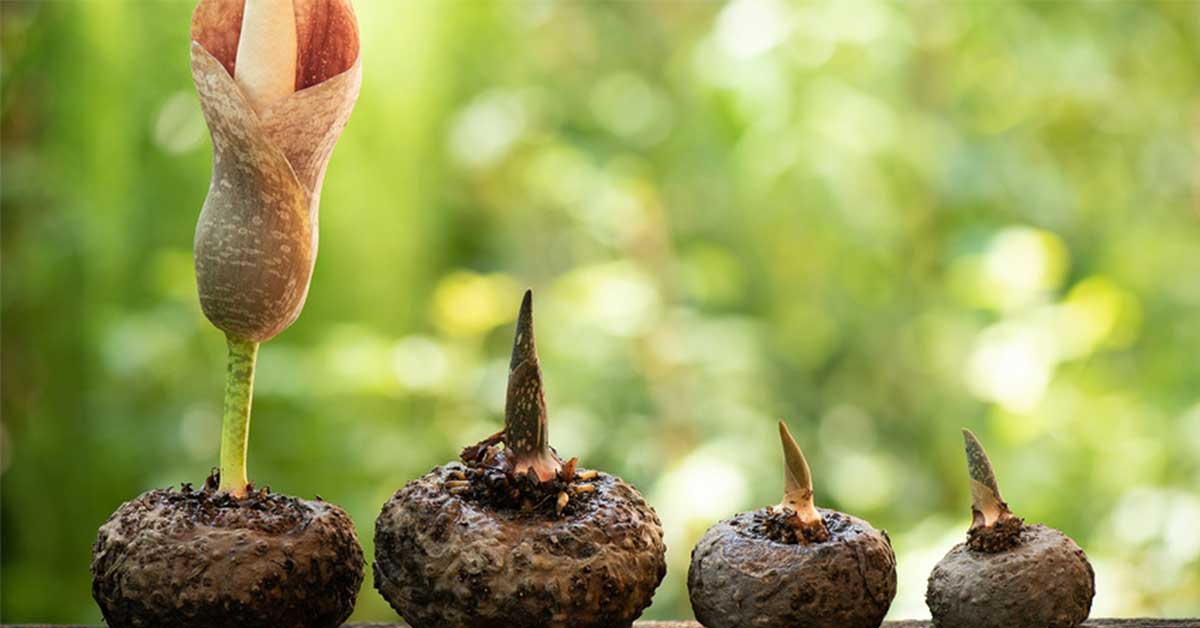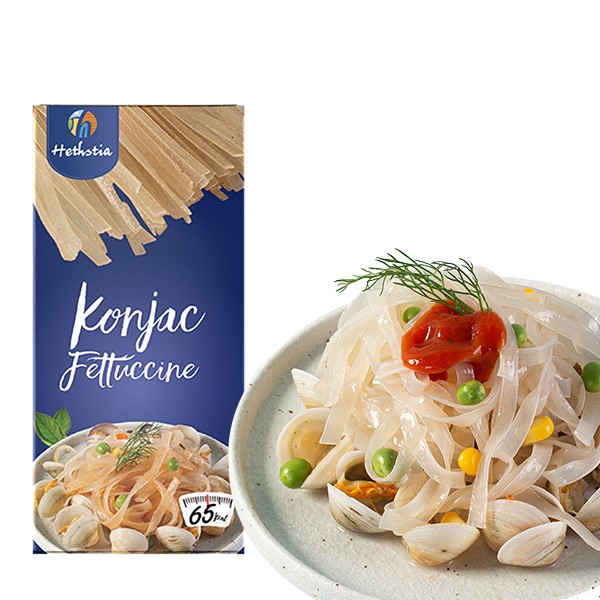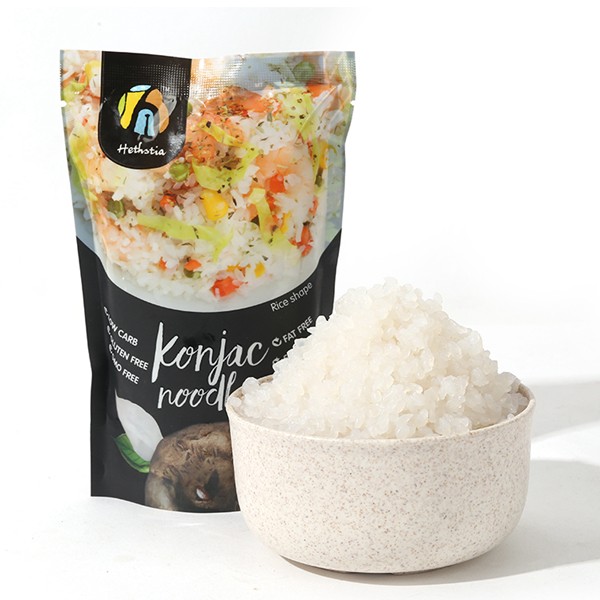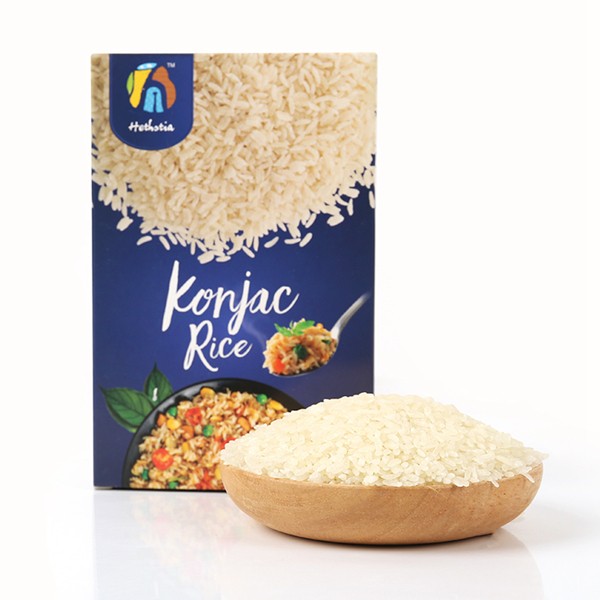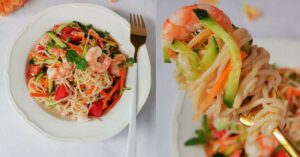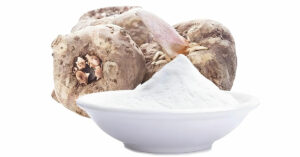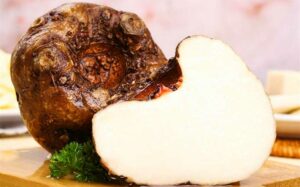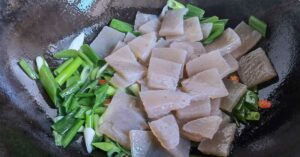Konjac, scientifically known as Amorphophallus konjac, is a natural plant resource rich in konjac polysaccharides and konjac gum.
The main economic component of konjac is glucomannan, a natural plant resource rich in konjac polysaccharides, also known as konjac gum.
Due to its unique physicochemical properties, such as water solubility, water-holding capacity, stability, suspension, gelling, adhesive, and film-forming properties, konjac glucomannan has extensive applications and development value.
This research paper aims to explore the innovative applications of konjac as a main ingredient and additive in various types of food and beverages, particularly in thermally irreversible gels, and thermally reversible gels, as well as its utilization in grains, meat products, beverages, and chilled drinks.
It showcases the significant role of konjac in improving food texture, enhancing nutritional value, and developing new types of healthy food.
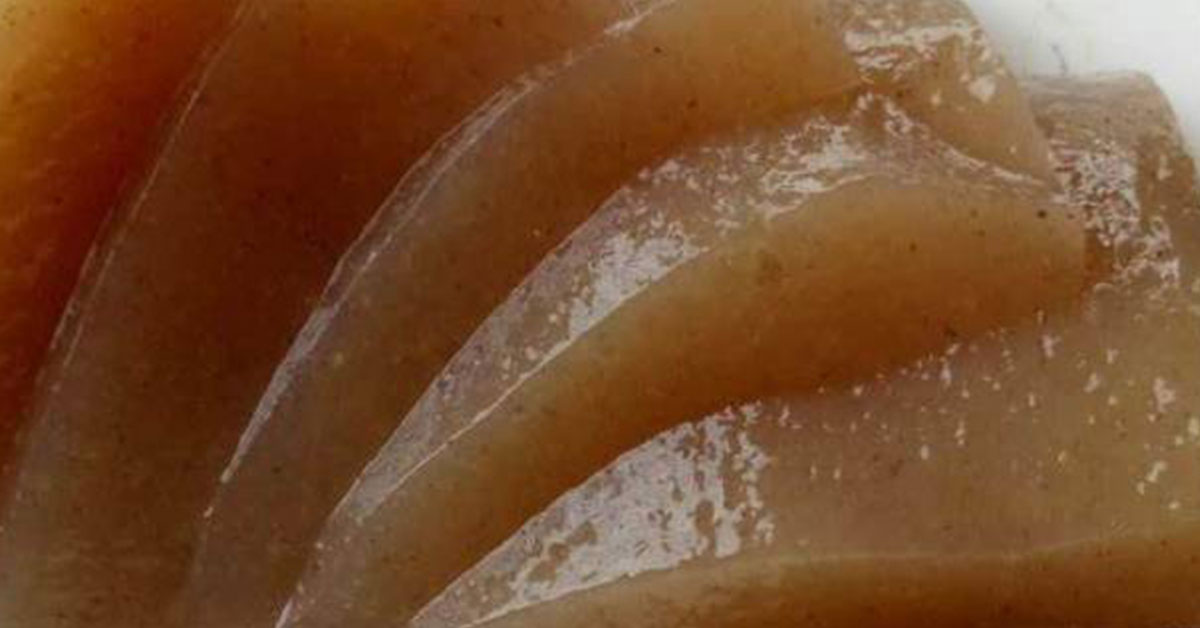
1. Amorphophallus konjac is the main ingredient of the food
1.1 Thermally irreversible gel foods
Konjac polysaccharides form stable and irreversible gels after heating and cooling, making them suitable for producing various foods such as konjac tofu, konjac chips, konjac noodles, and konjac knots. These foods not only have a smooth and elastic texture but also are low in calories and high in fiber, making them highly favored by health-conscious consumers.
Preparation Steps:
- Mix konjac flour and water in the appropriate ratio at low temperature, stirring until the konjac flour dissolves and forms a sol.
- Add starch to the sol and stir well to form konjac paste.
- Add a coagulant to the konjac paste and stir until it is evenly mixed, forming a semi-gel. Adjust the pH of the semi-gel to 11-12 and allow it to stand.
- Add a stabilizer and coagulant to the semi-gel and stir well to stabilize the gel. Restore the pH of the gel to neutral.
1.2 Thermoreversible gel foods
By combining konjac glucomannan with ingredients such as carrageenan, xanthan gum, agar, and alginates, it is possible to create various food products such as konjac jelly, pudding, fat-free gummies, and fruit jams.
1. Konjac Jelly: Utilizing konjac flour, carrageenan, and various flavors of powdered sweeteners, it is possible to create a smooth and chewy jelly. Compared to traditional jelly, konjac jelly has lower sugar content and higher dietary fiber, making it a favored choice for modern healthy snacks.
2. Konjac Pudding: Mix thick coconut milk, coconut oil, grated coconut, eggs, cocoa powder, and powdered sweeteners, then add Konjac flour to create a rich coconut-flavored Konjac pudding. Loved by both children and adults, it offers a soft and chewy texture that is hard to resist.
3. Fat-Free Gummies: By adjusting the ratio of konjac flour, xylitol, honey, gelatin, and citric acid, it is possible to produce elastic and chewy gummies. This not only satisfies consumers’ cravings for texture but also provides a low-calorie candy option.
4. Konjac Jam: Add approximately 0.5-0.6% konjac flour in proportion to the amount of fruit juice. Mix it thoroughly with sugar and slowly add it to the sugar pot at a temperature below 40°C, stirring gently.
When the temperature reaches 80°C, add the ingredients. Once it boils, cool and filter to create the jam.
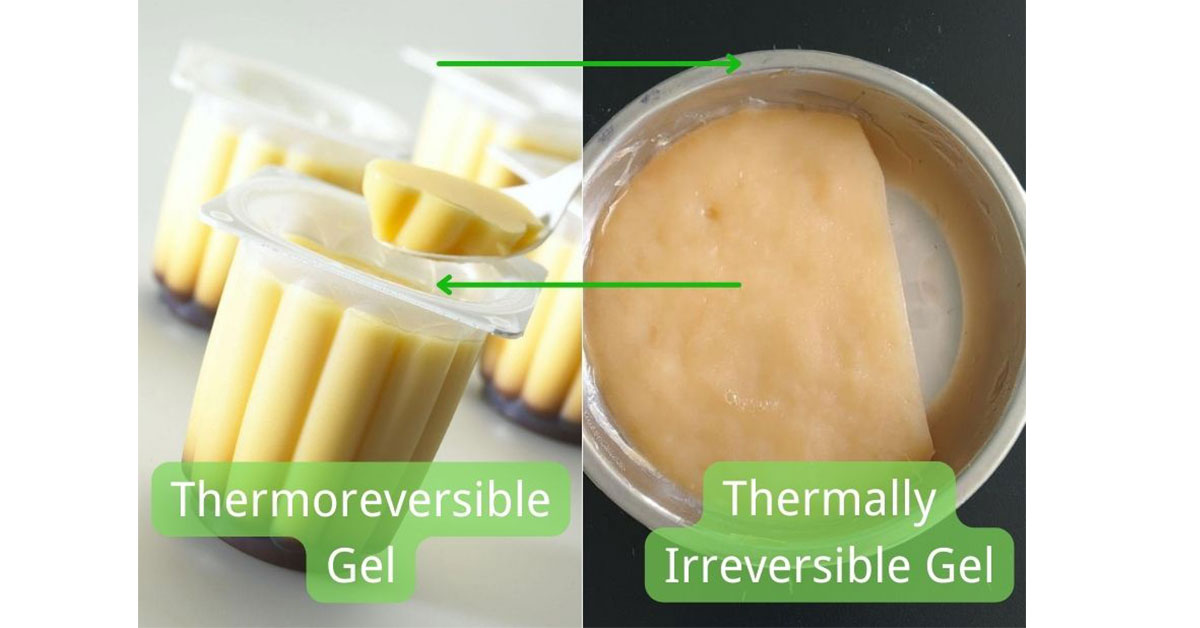
2. Amorphophallus konjac as an additive in food applications
2.1 Application of amorphophallus konjac in Grain and Food
Konjac flour can improve the structure and water retention of grain-based products such as bread and steamed buns. It enhances their softness, and elasticity, and provides additional dietary fiber, thereby enhancing the nutritional value of the food.
In addition to its role as a thickener and stabilizer, konjac gum can also be used as a suspending agent, gelling agent, emulsifier, film-forming agent, and quality improver in food. It is widely utilized as a gelling agent. When used as a gelling agent, its shaping and suspending properties are particularly evident.

2.2 Applications of amorphophallus konjac in Meat Products
1. Konjac-based Lean Meat Mince: By adding konjac gum to meat products, it can simulate the texture of fat, reduce the use of animal fats, and produce low-fat, high-fiber meat substitutes such as konjac meatballs, chicken balls, fish balls, and more.
2. Konjac Ham Sausages and Luncheon Meat: Leveraging the gelling properties of amorphophallus konjac, it serves as a partial substitute for meat, not only reducing the fat content of the products but also enhancing the chewiness and satiety. This aligns with the trend of healthy eating.
2.3 Application of amorphophallus konjac in Beverages
1. Konjac “Pearl” Cactus Juice: Konjac pearls, with their unique texture and zero-fat characteristics, have become a highlight in modern beverages. When combined with vitamin C-rich cactus juice, it not only satisfies the taste buds but also provides health benefits.
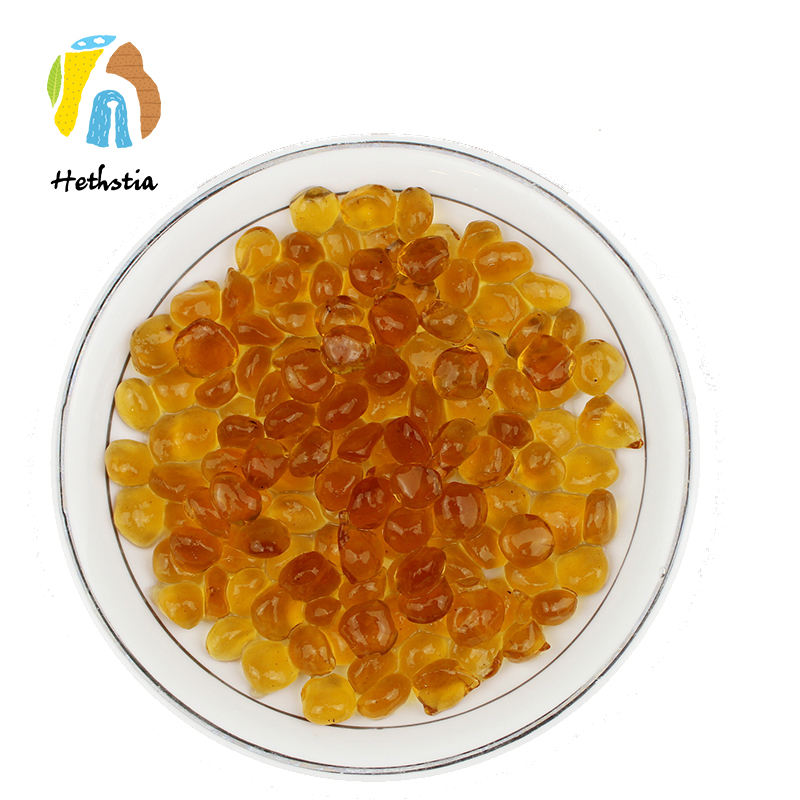
2. Konjac Beverage: By adding konjac gum as a suspending agent and stabilizer, it ensures the even distribution of solid particles in the beverage, improving its stability. Additionally, it enhances the taste profile and nutritional value of the beverage.
3. Amorphophallus Konjac Yogurt and Dairy Products: Adding Konjac flour to yogurt not only increases its viscosity but also enhances its nutritional and health benefits.
When the konjac flour content is at 0.06%, the konjac yogurt achieves the highest color, aroma, texture, and taste. When the content is below 0.06%, the yogurt becomes thin and lacks flavor. When the content exceeds 0.06%, the yogurt becomes excessively thick and heavy, and may even exhibit layering.
(1) Process Flow:
Tea leaves → Hot water extraction → Filtration
Konjac glucomannan → Sol solution preparation → Mixing → Coarse filtration → Membrane filtration → Sterilization → Hot filling → Bottle inversion → Water cooling → Finished product
Sugar, acid → Sugar conversion → Sugar-acid solution
(2) Key Process Points:
Filtration and sterilization are the primary control points. Filtration aims to remove trace amounts of water-soluble substances from the tea extract and konjac sol solution.
Sterilization is crucial to improve the product’s shelf life. Hot filling provides effective sterilization, eliminating the need for secondary sterilization, and minimizing the loss and damage to the tea components, resulting in better flavor.
2.4 Applications of amorphophallus konjac in Cold Beverages
Konjac is used as a stabilizer and emulsifier in cold beverages such as ice cream and sorbet. It significantly improves the texture of the products, prevents the formation of ice crystals, and creates a smoother and creamier consistency.
Additionally, the inclusion of konjac helps to reduce the overall calorie content of the products, meeting the consumer demand for low-calorie cold beverages.
Here are some key process points for ice cream recipes:
1. Product Formula: Skim milk powder 15%, white sugar 16%, konjac composite gum (combined with carrageenan, etc.) 1%, sodium carboxymethyl cellulose 1.5%, palm oil 1%, black tea powder 5% (or green tea powder 4%), sucrose fatty acid ester 0.2%, ethyl maltol 0.01%, and the rest is water.
2. Process Flow: Dissolve various ingredients in water, mix thoroughly, sterilize, homogenize, cool, age, freeze, fill, harden, inspect, package as finished products, and store.
3. Key Process Points: Dissolve the composite gum and sodium carboxymethyl cellulose in hot water through stirring. Dissolve ethyl maltol and tea powder separately in hot water at 85°C.
Heat and melt the palm oil before use. Apply 80°C pasteurization for 30 minutes. Homogenize with a pressure of 15 MPa to 20 MPa at a temperature of 60°C to 75°C. Age at 2°C to 4°C.
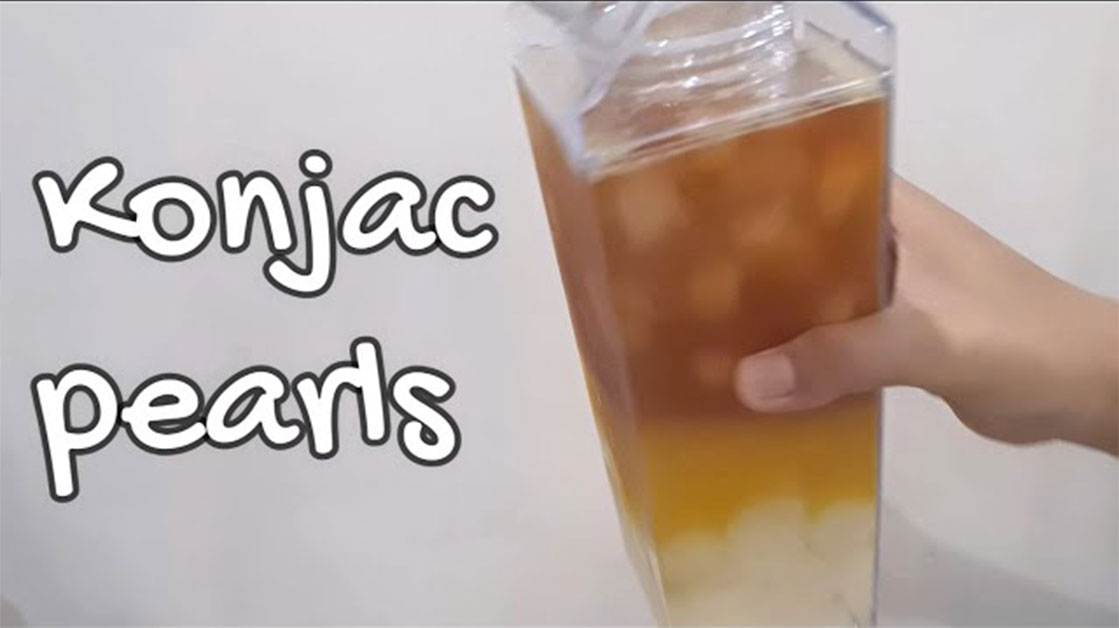
2.5 Applications in Film Products - Amorphophallus Konjac Glucomannan Composite Films
Utilizing the excellent film-forming and plasticizing properties of glucomannan, konjac powder is cross-linked and chemically modified with starch using special chemical methods to produce biodegradable materials.
When blended with polyethylene, it can be used to develop polyolefin resin composite materials that are dual biodegradable, resulting in various environmentally friendly products.
The high molecular weight of glucomannan can increase the wet strength of the material and allow for higher starch content in the film, thereby improving its biodegradability.
Chitosan, the second-largest biopolymer in nature after cellulose, exhibits excellent properties such as biocompatibility, biodegradability, antimicrobial activity, preservation, hemostasis, and wound healing promotion.
In recent years, chitosan has gained significant attention as a natural medical polymer material in research related to absorbable surgical sutures, artificial skin, hemostatic materials, and wound dressings.
Due to its strong water absorption, chitosan films have poor mechanical strength in the wet state, limiting their application in functional films for medical materials.
Therefore, enhancing the mechanical strength of chitosan films is of great significance for their application in biomedical materials.
Composite films, as a potential biomedical material, have broad prospects for application.
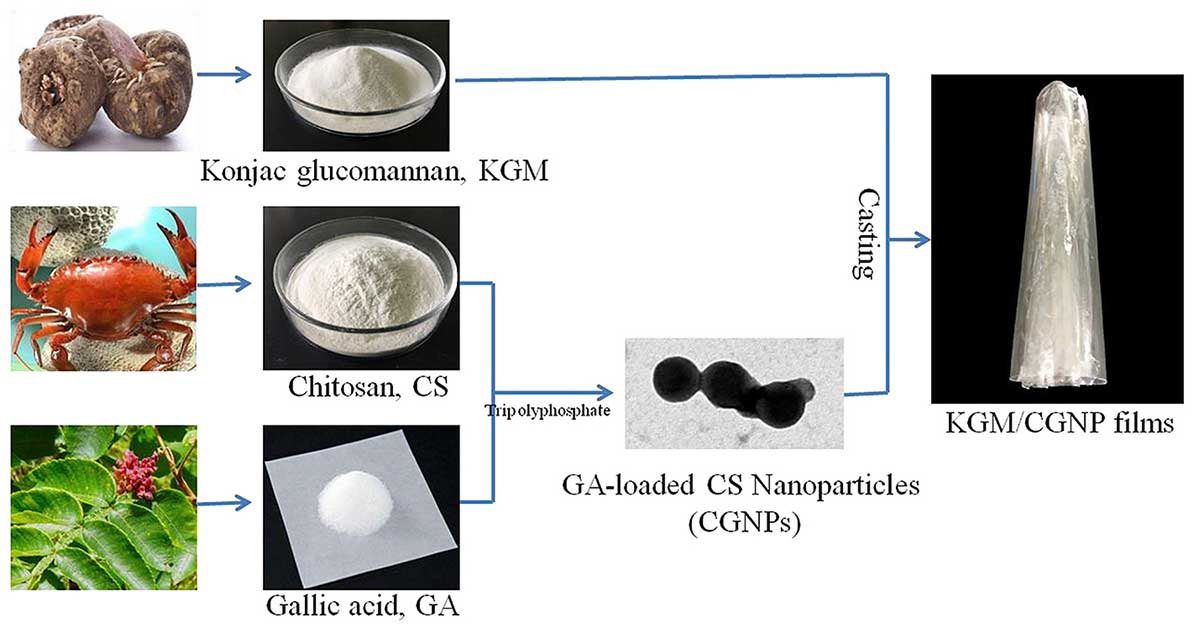
Conclusion
With its unique physicochemical properties, konjac is increasingly being widely applied in the food and beverage industry. It not only enriches the variety and texture of food but also provides important support for promoting the concept of healthy eating.
In the future, with advancements in food technology and the increasing health consciousness of consumers, the application of konjac in the food industry will become more diversified, injecting new vitality into food innovation and the development of healthy diets.
FAQ
Is amorphophallus konjac safe? What are its side effects?
It is usually considered safe to consume when used as directed. However, there are some potential side effects and precautions to be aware of:
- Digestive discomfort: Some people taking glucomannan supplements may experience digestive symptoms such as bloating, flatulence, abdominal discomfort, or diarrhea.
- Choking or obstruction: Glucomannan absorbs water and swells in the digestive tract, which can increase the risk of choking or obstruction.
- Interference with drug absorption: Glucomannan may interfere with the absorption of certain drugs.
- Allergic reactions: Some people may have allergic reactions to konjac or glucomannan.
Is it safe to eat konjac every day?
Daily consumption of konjac is safe for most people if eaten in moderation and as part of a balanced diet. Most people tolerate konjac root and its main component, glucomannan, well. It is important to note that the consumption of konjac needs to be accompanied by adequate water consumption.
Does Konjac raise blood sugar?
Glucomannan, the main component of konjac root, helps regulate blood sugar levels. Consumption of konjac or glucomannan supplements may have a positive impact on blood sugar control. It may help prevent a rapid rise in blood sugar levels after meals and contribute to more stable blood sugar levels overall. Some people may experience different effects on blood sugar levels after consumption, depending on factors such as dosage, timing, and individual metabolism.
Is Konjac good for high blood pressure?
Yes. Glucomannan, the main fiber in konjac, may help lower blood pressure by improving overall cardiovascular health. The dietary fiber in konjac may help lower blood pressure levels by promoting healthy arteries and reducing stress on the cardiovascular system.
Is Konjac good for diabetes?
Konjac may have potential benefits for people with diabetes. Examples include blood sugar regulation, improved insulin sensitivity, increased satiety, and weight management. Although konjac may have potential benefits for people with diabetes, they are not a substitute for prescription diabetes medications.
Is Konjac good for the stomach?
Yes, konjac is good for your stomach because of its high fiber content and prebiotic properties that support healthy digestion and gut flora. However, it’s important to eat it in moderation and be aware of potential digestive discomfort, especially if you’re not used to high-fiber foods.
Is Konjac good for the liver?
Konjac benefits liver health by lowering cholesterol, regulating blood sugar, and supporting weight management and detoxification.
The glucomannan in Konjac has been shown to lower LDL cholesterol (“bad” cholesterol) and total cholesterol levels. High cholesterol is a risk factor for non-alcoholic fatty liver disease (NAFLD). By lowering cholesterol, konjac may help protect the liver from fatty liver disease.
What is Amorphophallus konjac in Chinese?
In Chinese, Amorphophallus konjac is commonly referred to as “魔芋” (mó yù) or “魔芋薯” (mó yù shǔ). The term “魔芋” translates to “devil’s taro” or “devil’s yam,” while “薯” means “potato” or “tuber.”
Is konjac a probiotic?
No, konjac is not a probiotic. Konjac refers to the plant species konjac, not a source of live beneficial bacteria such as probiotics.
How much water do you drink with Konjac?
If you take glucomannan in supplement form (capsules or powder), it is usually recommended that you take about 1 gram 3 times a day. Drink at least 8 ounces (240 ml) of water with each dose of glucomannan.
When eating a serving of Shirataki noodles (about 100 grams), drink at least 8-16 ounces (240-480 ml) of water with the meal to aid digestion.
Drink at least 8 oz (240 ml) of water with each serving of konjac jelly and chew thoroughly before swallowing.

